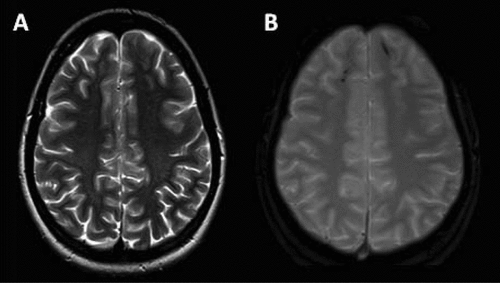Domain-Specific and Generalization Effects of Cognitive Intervention in Diffuse Axonal Injury: A Case Report
To the Editor: The neurobehavioral sequelae of traumatic brain injury significantly contribute to the long-term disability associated with this pathology.1 Thus far, there is insufficient evidence for either domain-specific or generalization effects resulting from cognitive intervention in memory, executive functioning, or speed-of-processing domains. Here, we report on the case of an adolescent patient who reduced the aforementioned cognitive deficits after being administered a structured cognitive rehabilitation program, allowing the reestablishment of premorbid academic and interpersonal functioning.
Case Report
A 17-year-old girl presented to our neuropsychology service with memory and cognitive-slowing complaints. Four months earlier, she had had a traumatic brain injury for which she was hospitalized for 9 days, after being hit by a car. At that time, she presented with circumstantial amnesia, an extended period of somnolence, and disorientation. Absence of endocranial traumatic lesions was reported by computed tomography (CT) analysis. At her release, she reported right-hemicranial headache. Three months after the incident, she complained about concentration and memory problems, slowing of thought, cognitive fatigue, and poorer grades. Neurological examination was normal. The magnetic resonance imaging (MRI) exhibited diffuse axonal disease of Grade I2 (Figure 1).

[A]: Axial T2-weighted MRI shows multifocal hyperintense foci located at the gray-white matter interface in the frontal lobes.
[B]: Axial T2-weighted gradient-echo MRI shows bilateral multifocal hypointense foci from susceptibility effect.
A neuropsychological assessment 4 months after injury revealed a moderate recall deficit, mainly of visual and verbal episodic memory, and a slowing of processing speed despite an IQ score within the normal range. The patient also reported irritability and anxiety related to her low performance in school. A 16-month post-injury follow-up assessment yielded similar results, with only a small improvement in verbal fluency. She then underwent a 10-session cognitive rehabilitation program directed at memory, executive functioning (in order to indirectly improve memory capacities), and speed-of-processing abilities. Anxiety was tackled through relaxation techniques.
The post-intervention assessment showed that the patient performed above mean scores on memory tests. Although slow processing speed was still evident on some tests, performance improved to normal ranges in two motor and mental speed tests, suggesting an overall improvement. The patient was able to regain her daily functioning and academic performance, consequently allowing her to attain her life and academic goals. An 8-month post-intervention follow-up revealed that the gains were maintained, and she was able to accomplish her academic goals.
Discussion
There is still an ongoing debate on which approach to intervention, which parameters, and patient characteristics can yield better results. Our case illustrates how a young patient can benefit from a cognitive intervention delivered after a 16-month post-injury interval, improving in specific cognitive domains.
A recent metaanalysis3 pointed to a clear, specific effect of attention training, weak support for domain-specific or generalization effects of memory treatment, and no benefits from executive functioning or speed-of-processing treatments. Contrasting with these findings, we found effects from training memory, executive functioning, and speed-of-processing; yet we should note that all these functions were trained during the program. This does not allow us to establish an exclusive causal relationship between each specific domain trained and an observed improvement in that same domain. However, we should highlight that the observed improvements are not likely attributed to a natural recovery process, since neuropsychological assessment results were similar between 4 and 16 months after injury and the fact that the intervention started 16 months after the injury.
Nonetheless, we believe that training speed-of-processing, executive functioning, and memory, either together or individually, can have an impact on specific or general cognitive domains, at least in young, mild-to-moderately injured patients. In these patients, it seems reasonable that intensive training might lead to functional reorganization, even when intervention is not immediately delivered after the acute phase. A considerable number of high-quality studies are needed to definitely clarify the issue of specificity and generalization to other domains and to the “real world,” especially in young patients.
1 : Assessing traumatic brain injury outcome measures for long-term follow-up of community-based individuals. Arch Phys Med Rehabil 2001; 82:367–374Crossref, Medline, Google Scholar
2 : Diffuse axonal injury in head injury: definition, diagnosis and grading. Histopathology 1989; 15:49–59Crossref, Medline, Google Scholar
3 : Effectiveness of cognitive rehabilitation following acquired brain injury: a meta-analytic re-examination of Cicerone et al.’s (2000, 2005) systematic reviews. Neuropsychology 2009; 23:20–39Crossref, Medline, Google Scholar



